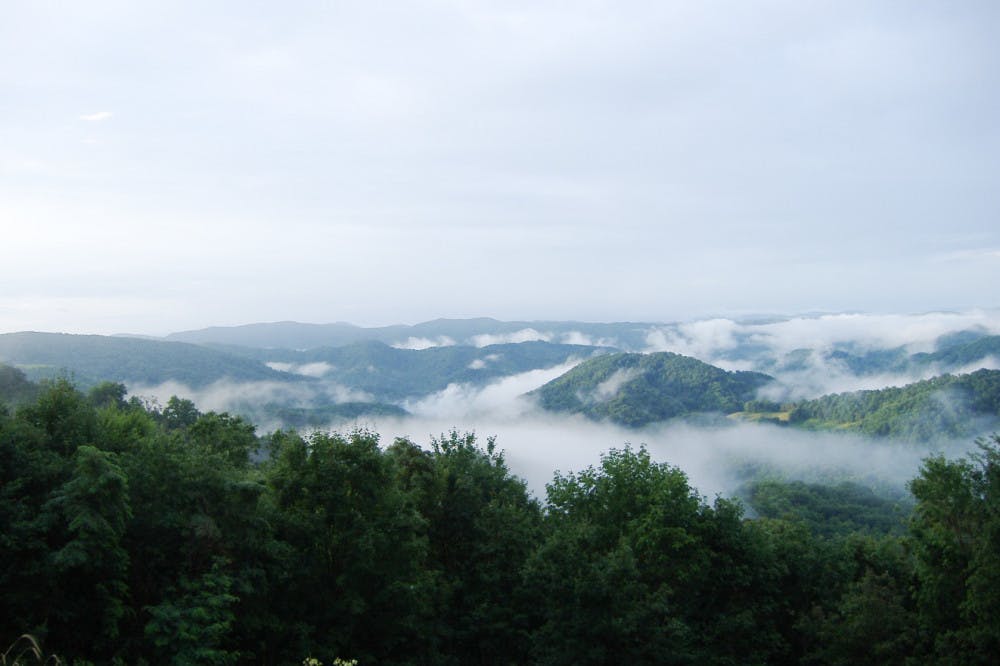For university researchers, one of our country’s oldest geographical landmarks still provides insights into the past.
In a study funded by the National Science Foundation that was conducted between 2011 and 2014 and spanned hundreds of kilometers, researchers used data from seismic monitors to understand the process that formed the Appalachian Mountains.
Hundreds of millions of years ago, “there was a collision between the tectonic plate that contains what’s now North America … and the tectonic plate that contained what is now Africa and South America, which we call Gondwana,” said Karen Fischer, professor of earth, environmental and planetary sciences and one of the study’s lead authors. As the edges of the plates collided, one of them would have subducted, or slid underneath the other. Some time after, the continental crusts collided as well.
“When continental crusts collide, because both of the crusts are fairly buoyant, neither of them subducts,” Fischer said. The result is that both crusts buckle upwards, forming a mountain range — in this case, the Appalachians.
The researchers took advantage of data from a preexisting array of hundreds of seismometers and installed an additional 85 seismometers of their own in a setup of three dense lines stretching across Georgia and Florida. “The really cool thing about this was that the seismometers were only about five kilometers apart,” said Emily Hopper ScM’13 PhD’16, the other lead author of the study. This allowed the researchers to look into the crust with a very high resolution.
The researchers had already known “from the surface geology that in Georgia and Florida there are rocks that didn’t originate in North America. They came from Gondwana,” Hopper said. This chunk of Gondwanan crust was left behind as debris from the collision, and by studying it, the scientists were able to look at “a relatively well-preserved continental collision from 300 million years ago,” Hopper said.
The data revealed what Fischer described as a “shallow, dipping interface,” adding that “the rocks above (the boundary) are the rocks of Gondwana that were shoved up, and the rocks below it are the rocks of America.” While previous studies had interpreted this as a very steep incline, Fischer and Hopper’s study revealed a slope of less than 15 degrees.
The study’s methodology relied on vibrations from earthquakes that travelled through the Earth’s crust and hit the seismometers. “You can look at the shape and the timing of the waves to get at structures beneath the surface,” Hopper said. “It’s kind of like echolocation or sonar,” she added.
This type of inference is “related — but on a different scale — to what people do in the oil industry,” said Donald Forsyth, professor of geological sciences. Whereas oil companies look at small details, Fischer and Hopper investigated larger structures in the crust.
The waves generated by earthquakes come in different types and travel through the Earth differently. When one type of wave, called a shear wave, hits a boundary in the crust, it can be converted into a faster-moving compressional wave. “If you have a wave that didn’t convert at the boundary and a converted wave, then you can measure the time between those arrivals and convert that to depth,” Hopper said.
Some geologists had believed that the collision that formed the Appalachian Mountains was a strike-slip collision, in which the plates slide past each other. An example of this type of collision is “the San Andreas fault, … where (the tectonic plates) are basically just moving past each other, and the plate boundary is almost vertical,” Forsyth said. The study found that the collision was actually a thrust collision, in which one plate gently glides over the other.
This study changes the way geologists understand the formation of the Appalachian Mountains, and it shows that modern processes were similar to those shaping the earth millions of years ago. “Going back 300 million years in time, you don’t know how things have changed,” Hopper said. “One of the things they always teach you in Geo 101 is this process of uniformitarianism: the idea that the present is the key to the past.”





